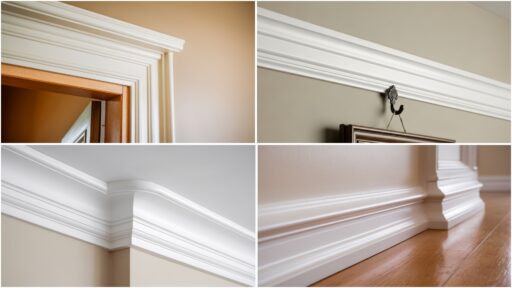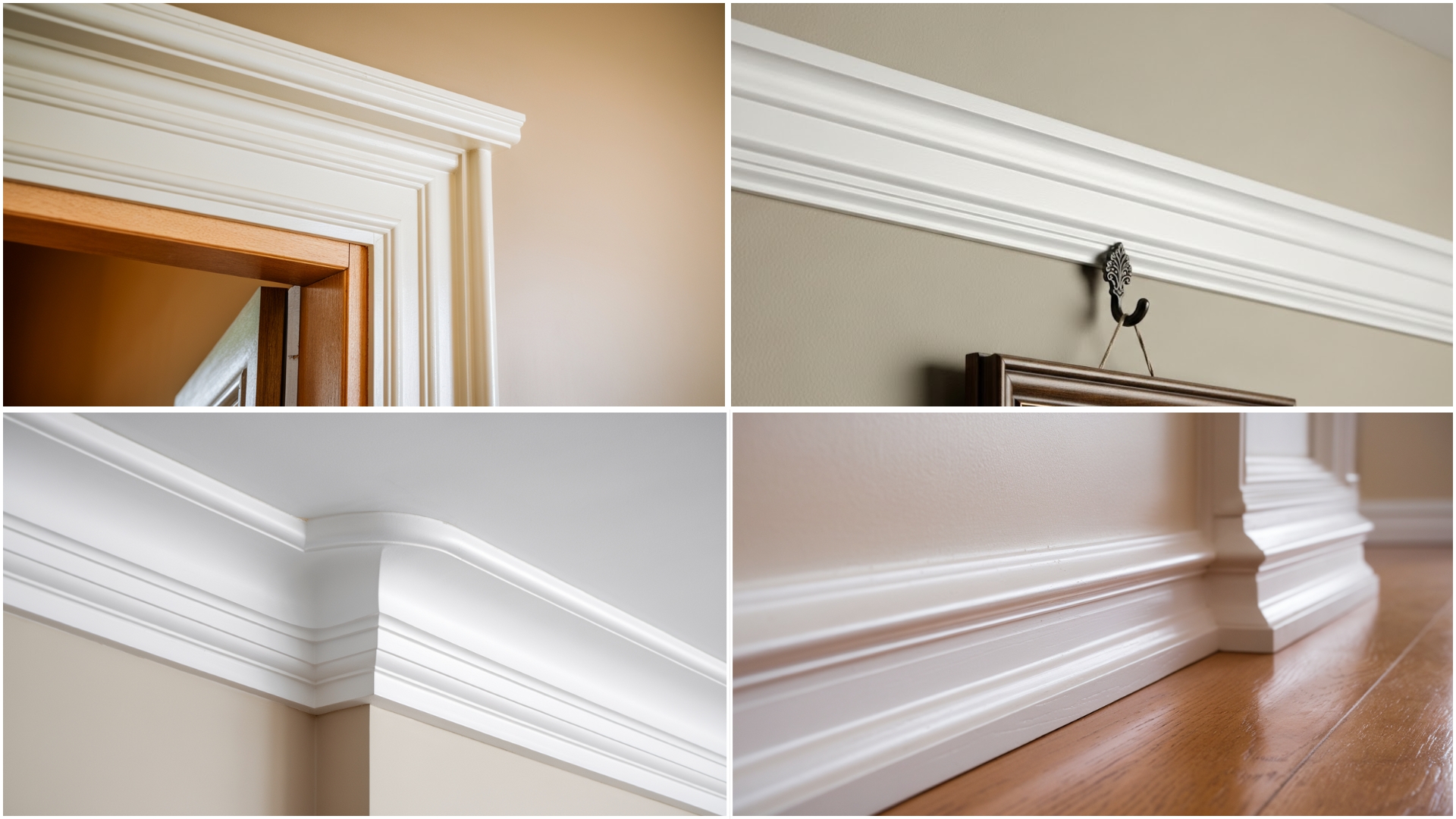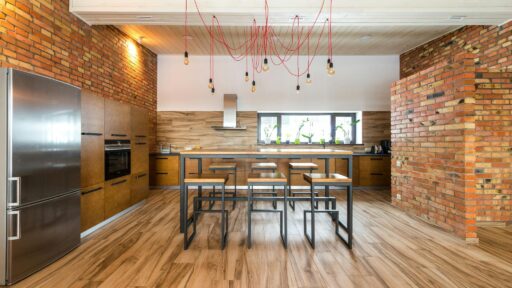Looking to give your home a finished, professional look?
Understanding the different types of trim is your first step to upgrading any room. Trim might seem like a small detail, but it makes a huge difference in how your space looks and feels.
From protecting your walls to adding beautiful style, the proper trim can turn a plain room into something special.
If you’re planning a DIY project or working with contractors, knowing about various types of trim will help you make wise choices.
Find out the most popular options and find what works best for your space. Get ready to learn how simple trim upgrades can completely change your home’s appearance.
What is Trim and Why is It Important?
Trim, also called molding, refers to the decorative strips of wood, plastic, or other materials that cover joints and edges in your home.
You’ll find trim around doors, windows, along floors (baseboards), and where walls meet ceilings (crown molding). Trim serves two main purposes in interior design.
First, it protects your walls, floors, and ceilings from damage like scratches, dents, and moisture. Second, it makes rooms look more finished and polished by hiding gaps and rough edges where different surfaces meet.
Good trim work can make even a simple room appear more refined and well-built. It’s like adding a frame to a picture; it completes the look.
Types of Trim and Their Uses
Every room has different trim pieces that serve specific purposes. Understanding these main types will help you choose the right trim for your project. Each type has its own job, from protecting walls to adding style.
Here are the most common trim types you’ll find in homes.
1. Baseboard Trim

Baseboard trim runs along the bottom of walls where they meet the floor. This trim covers the gap between your wall and flooring, creating a clean, finished look.
It also protects your walls from vacuum cleaners, furniture, and foot traffic that could cause scuffs and damage. Baseboards come in many different heights and styles to match your room’s design and personal preferences.
2. Crown Molding
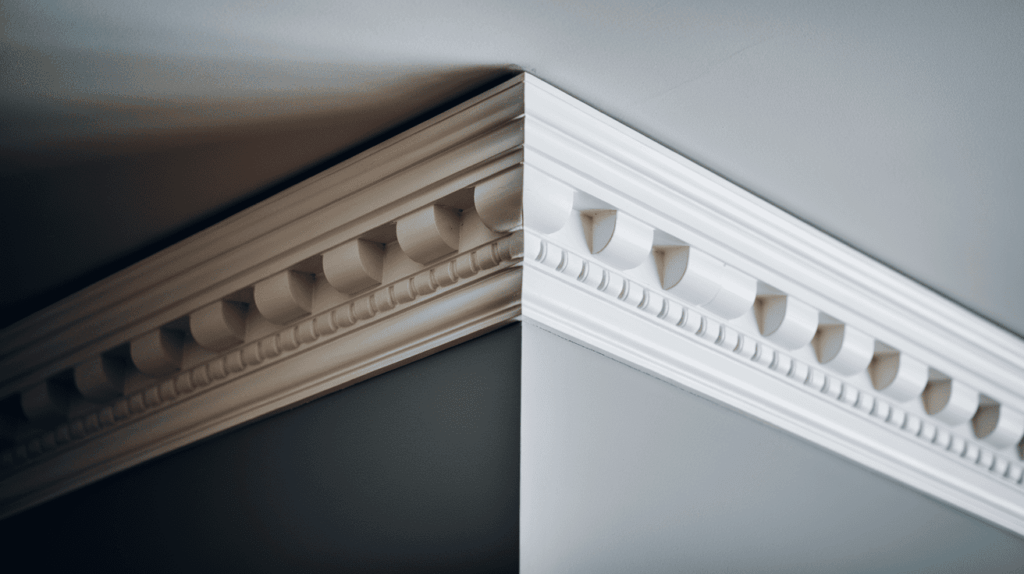
Crown molding is installed where walls meet the ceiling, creating a graceful border around the top of your room. This decorative trim can be simple and modern or fancy with detailed designs.
Crown molding makes ceilings appear higher and rooms feel more luxurious. It’s one of the best ways to add character and refinement to any living space in your home.
3. Casing Trim (Door & Window Casing)

Casing trim frames around doors and windows, covering the gaps between the frame and wall. This trim gives openings a finished appearance while hiding any uneven edges from construction.
Door and window casings can be simple flat boards or decorative pieces with curves and details that help tie your room’s design together and create a polished, professional look throughout your home.
4. Chair Rail
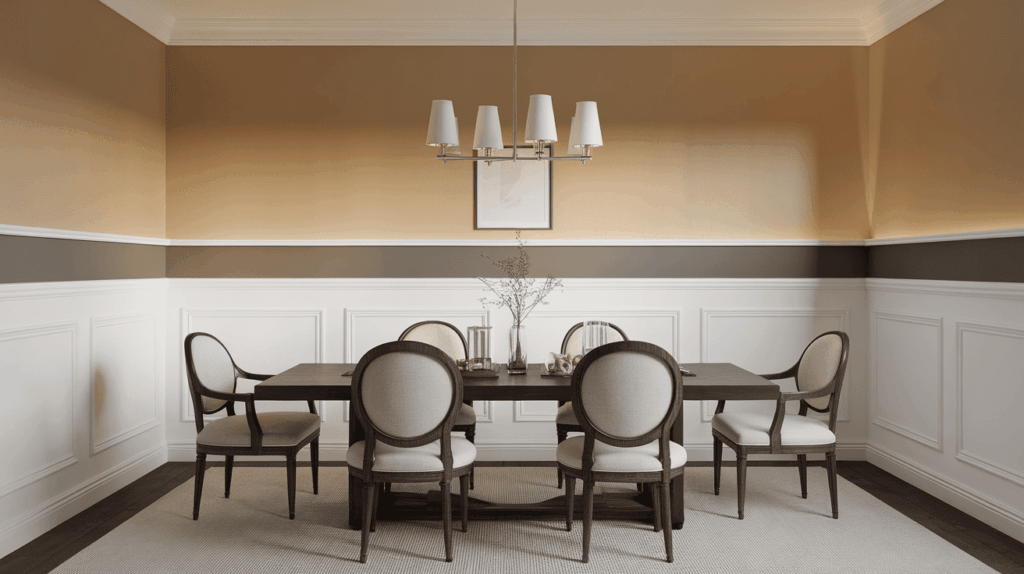
Chair rail is a horizontal piece of trim installed about three feet up from the floor, roughly at chair height. Originally, it protected walls from chair backs that might scratch or dent them.
Today, chair rail is mainly decorative, dividing walls into sections and adding visual interest to dining rooms, hallways, and other living spaces while creating a graceful, traditional appearance.
5. Wainscoting & Wall Trim
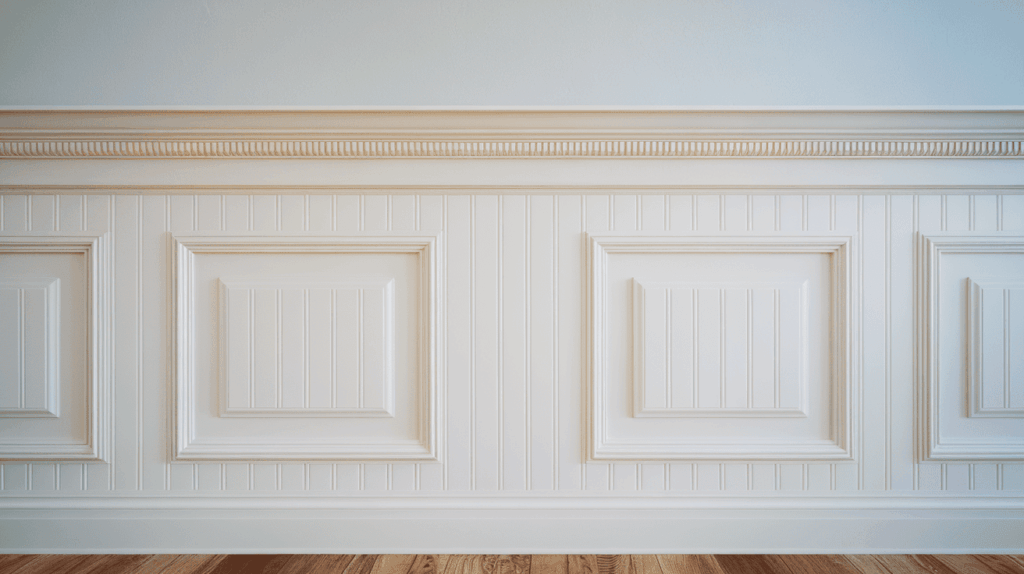
Wainscoting covers the lower portion of walls, usually from floor to about waist height. This trim can be simple flat panels or raised designs that add texture and style.
Wall trim creates decorative rectangles or squares on walls for a classic look while protecting high-traffic areas from damage and everyday wear that occurs in busy households.
6. Quarter Round & Shoe Molding
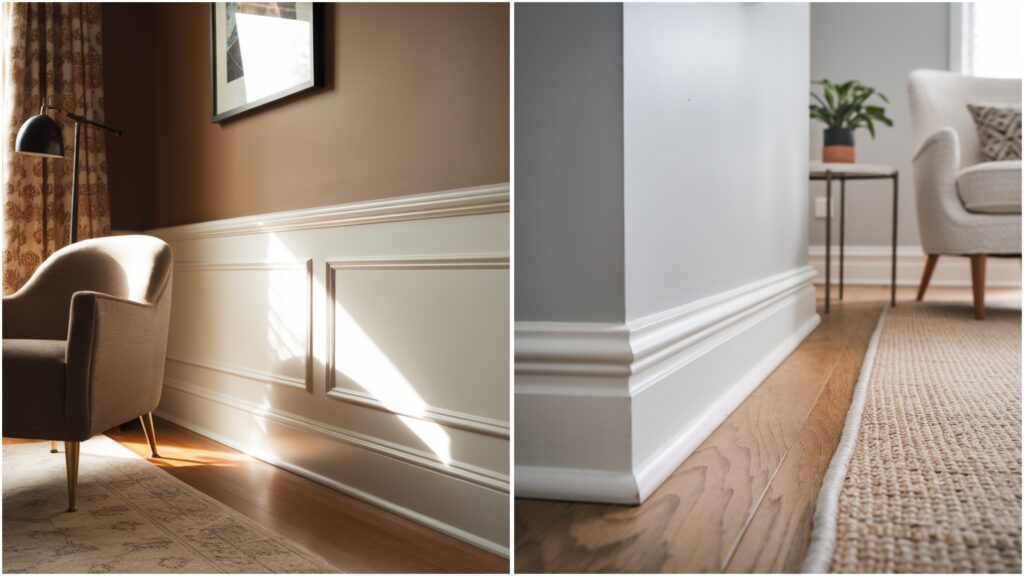
These small, curved pieces of trim finish the space where baseboards meet the floor. Quarter round has a rounded profile, while shoe molding is flatter and wider.
Both cover gaps and transitions between different flooring materials. They’re especially useful when floors aren’t perfectly level or when installing new flooring over existing baseboards in older homes.
7. Picture Rail & Picture Frame Molding
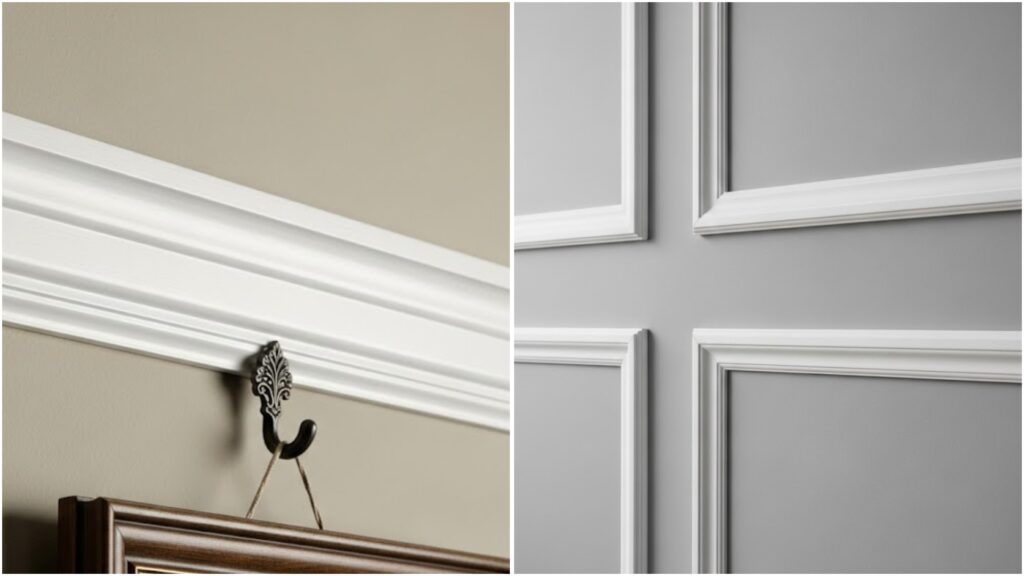
Picture rail is a horizontal trim piece mounted high on walls, designed to hang artwork without putting holes in the wall. Picture frame molding creates decorative rectangular frames directly on walls for a refined look.
Both add architectural interest and can make any room feel more formal and well-designed than plain walls while protecting your wall surfaces.
8. Cove Molding
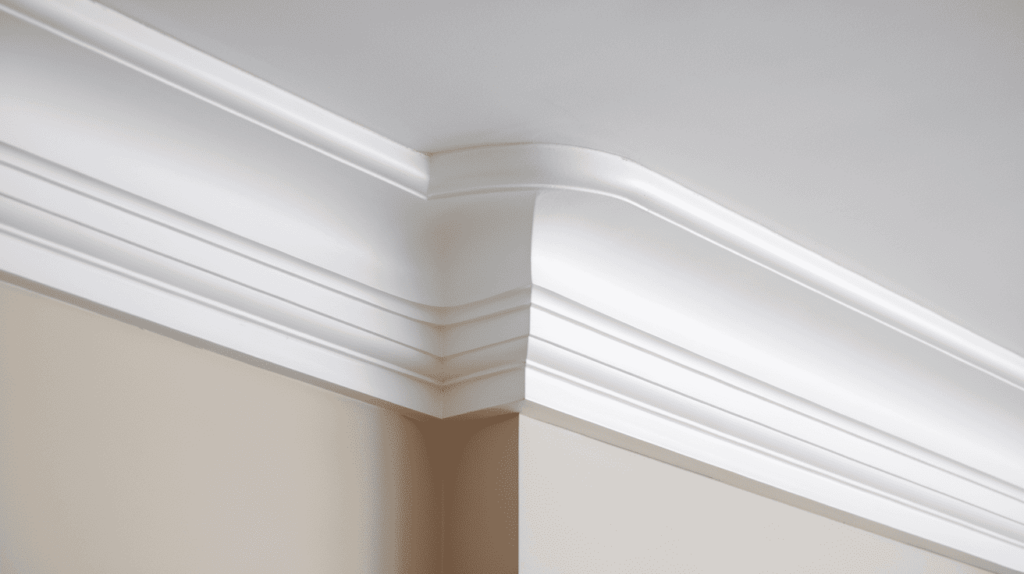
Cove molding is a simpler alternative to crown molding with a smooth, curved shape. It creates a gentle transition between walls and ceilings without fancy details or sharp angles.
Cove molding works well in modern homes or rooms where you want a clean, understated look while still having that finished appearance around the ceiling area.
Trim Materials: Pros and Cons
Choosing the right material for your trim is just as important as selecting the style. Different materials offer various benefits and drawbacks depending on your budget, room location, and design goals.
Here’s a comparison of the most popular trim materials to help you make the best choice for your project.
| MATERIAL | PROS | CONS | BEST USE | PRICE |
|---|---|---|---|---|
| Solid Wood | Natural beauty, paintable/stainable, durable | Expensive, can warp, heavy | Living rooms, formal areas | $1.75–$8.00+ (paint/stain grade, pine/poplar) $4.00–$10.00+ (hardwood: oak, maple, cherry, walnut) |
| MDF | Smooth finish, affordable, lightweight | Not moisture-resistant, chips easily | Dry rooms, bedrooms | $0.50–$1.50 |
| PVC/Composite | Waterproof, lightweight, easy to clean | Less natural look, paint-only | Bathrooms, kitchens, basements | $0.75–$4.00 |
Key Points:
- Durability: Wood lasts longest, PVC resists moisture, MDF is most fragile.
- Finish: Wood accepts stain and paint, MDF paints well, PVC is paint-only.
- Installation: MDF and PVC are lighter and easier to install than wood.
Consider your room’s moisture levels and traffic when selecting materials. For most homeowners, MDF works well in dry areas while PVC is perfect for wet spaces.
Trim Styles: Matching Look and Architecture
Your trim style should match your home’s overall design to create a cohesive, polished look. Different architectural styles call for specific trim profiles and details.
Choosing the right trim style helps reinforce your home’s character and makes every room feel intentional and well-designed.
1. Traditional
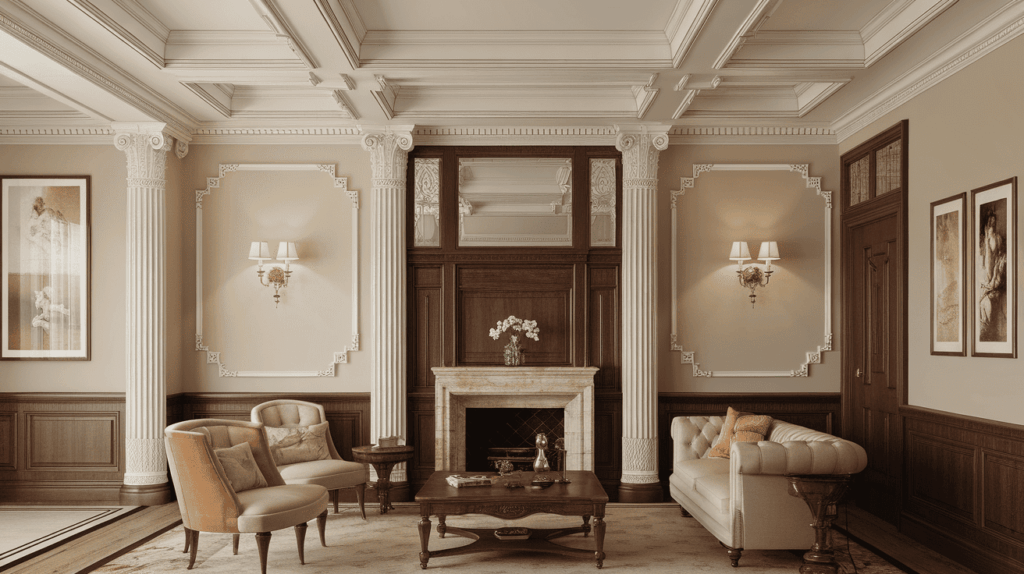
Traditional trim features classic profiles with gentle curves and moderate detail work. This style includes fluted casings, detailed baseboards, and ornate crown molding with multiple layers.
Traditional trim works best in formal dining rooms, living rooms, and older homes, creating a graceful, lasting appearance that adds refined charm.
2. Craftsman
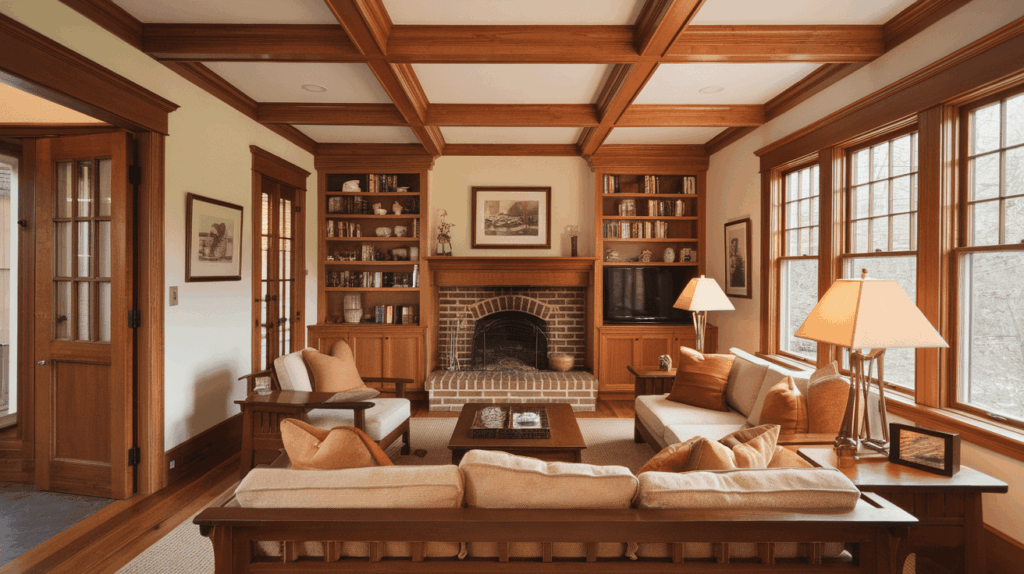
Craftsman trim is known for thick, substantial pieces with clean lines and minimal decoration. This style features wide, flat casings around doors and windows, chunky baseboards, and simple crown molding.
Craftsman trim works perfectly in bungalows and cozy family spaces, emphasizing quality craftsmanship and creating a warm, handmade feel.
3. Modern

Modern trim emphasizes clean, straight lines with minimal ornamentation and sleek profiles. This style features flat casings, simple baseboards, and streamlined crown molding or no crown at all.
Modern trim works perfectly in contemporary homes and minimalist spaces, creating a fresh, uncluttered appearance that feels current and stylish.
4. Farmhouse
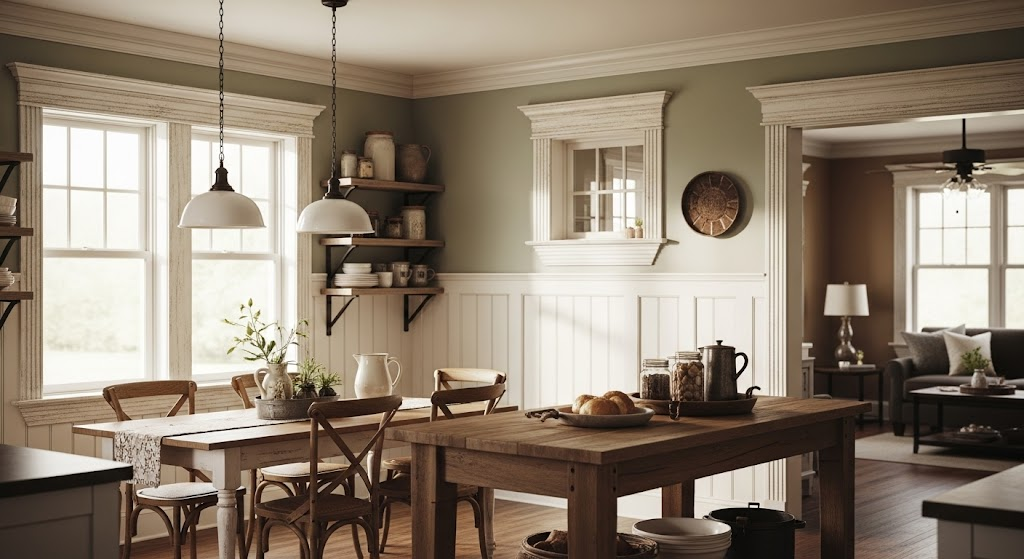
Farmhouse trim combines rustic charm with practical design, featuring wide planks, shiplap details, and weathered finishes. This style includes board and batten wainscoting, thick window casings, and simple crown molding with a casual feel.
Farmhouse trim works beautifully in kitchens and country-style homes, creating a cozy, welcoming atmosphere.
How to Choose the Right Trim for Your Home
Choosing the right trim involves several important factors that work together to create a beautiful, cohesive look. Start by considering your home’s architectural style and match trim profiles accordingly.
Room size matters too; larger rooms can handle wider, more detailed trim, while smaller spaces look best with simpler, thinner profiles.
Think about proportion by keeping trim sizes balanced with ceiling height and room scale. Material choice depends on your budget, room location, and maintenance preferences.
Color should complement your walls and other finishes.
For a unified appearance throughout your home, use consistent trim profiles in connecting spaces and match trim styles with your existing architectural elements like built-ins and cabinetry.
Installation Tips and Buying Advice
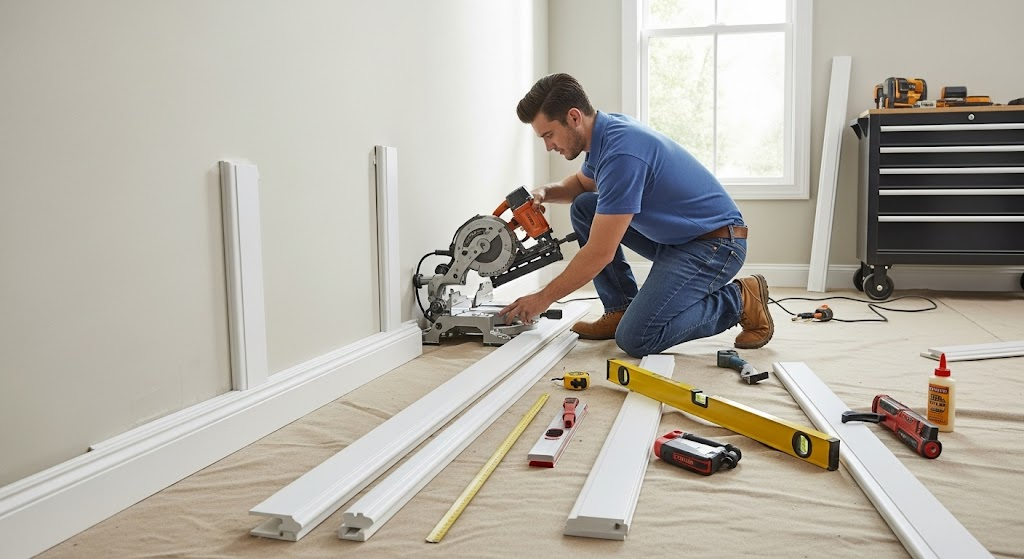
Installing trim can be a rewarding DIY project, but it requires careful planning and the right approach. If you’re doing it yourself or hiring someone, understanding the basic process will help you get better results and avoid common mistakes.
- Measure twice, cut once: Double-check measurements before cutting to avoid waste and ensure perfect fits.
- Buy 10-15% extra material: Order more than needed for mistakes, repairs, and matching pieces.
- Check for straight, undamaged pieces: Inspect trim for warping, cracks, or dents before purchasing.
- Use proper tools: A miter saw, nail gun, and wood glue create professional-looking results.
- Hire professionals for complex jobs: Crown molding and whole-house projects often need expert skills.
- Pre-finish when possible: Prime and paint trim pieces before installation for smoother coverage.
Simple projects like replacing baseboards or adding picture frame molding are great for beginners.
However, if you’re uncomfortable with power tools or have cathedral ceilings, professional installation is worth the investment for safety and quality results.
The Bottom Line
Now you know all about the different types of trim and how they can improve your home.
From basic baseboards to fancy crown molding, each type serves a purpose and adds its own style. Remember to consider your home’s design, your budget, and the room’s function when choosing trim.
Start small with simple projects and work your way up to bigger ones.
With this knowledge about types of trim, you’re ready to create the beautiful, finished look you’ve always wanted. These upgrades will make every room in your house look impressive and well-designed.
Browse more of our home improvement blogs to keep every room looking its best!

